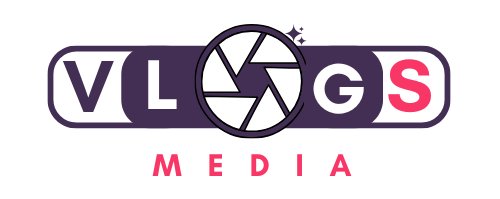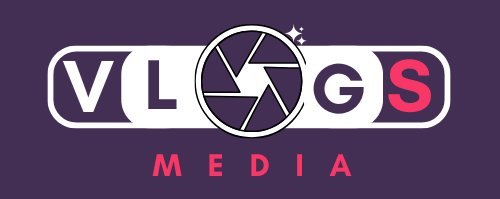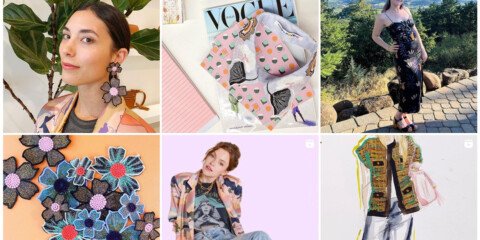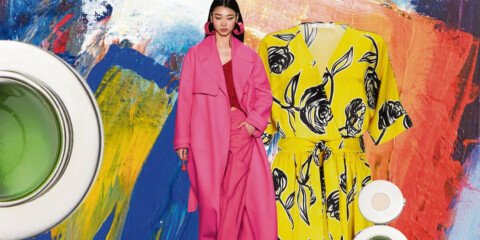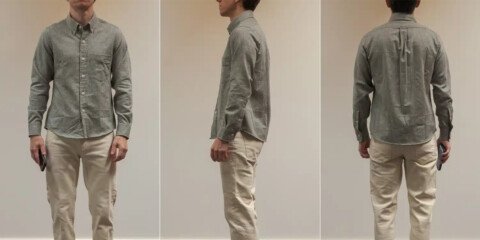The fashion industry has long been viewed as a realm of creativity, with designers pushing boundaries to create pieces that inspire, challenge and change the way we think about clothing. But as we head into 2025, the industry faces a unique dilemma: how can it innovate while staying true to its roots? The intersection of fashion, sustainability, technology and consumer demands presents both opportunities and challenges that must be addressed in the years ahead. With advances in artificial intelligence, new sustainable materials and increasing demand for ethical production, fashion is at a crossroads and must strike a balance between innovation and tradition.
At the heart of fashion’s innovation dilemma is the rapid pace at which technology is reshaping the industry. The advent of AI and machine learning has led to revolutionary changes in design, production and consumer interaction. Designers now have access to tools that allow them to predict trends, create designs from scratch and even personalize pieces based on consumers’ individual preferences. Virtual dressing rooms and digital fashion shows are becoming more commonplace, allowing consumers to try on clothes from the comfort of their own homes and designers to reach a global audience.

While these advancements bring an exciting future, they also raise questions about the human factor in fashion. Designers once revered for their unique vision and craftsmanship are now eclipsed by algorithms that can create designs in minutes. This has sparked debates about the authenticity of fashion and whether technology should replace traditional craftsmanship. The rise of AI-driven fashion has led some to question whether we are moving toward a future where creativity is driven by machines rather than the human imagination. Is the soul of fashion being lost in the pursuit of innovation?
Another challenge lies in the pursuit of sustainability, which has become one of the fashion industry’s most pressing issues today. Fast fashion, once seen as the pinnacle of accessibility and affordability, has come under intense scrutiny for its environmental and social impact. The demand for low-cost, mass-produced clothing has led to overconsumption, waste, and exploitation of workers in developing countries. As awareness of these issues grows, consumers are increasingly looking for sustainable alternatives, and brands are striving to meet this demand.
The dilemma is how to innovate without falling into the trap of greenwashing—where companies claim to be sustainable without actually making meaningful changes. Brands that are truly committed to sustainability face the challenge of balancing innovation and environmental responsibility. New materials such as biodegradable fabrics, recycled textiles, and plant-based leathers are being developed at an impressive pace. However, these innovations often come with a hefty price tag and can sometimes lack the durability and quality consumers expect from traditional materials. This begs the question: can fashion really be sustainable without sacrificing style, comfort, and affordability?
The theme of innovation and sustainability also extends to the concept of circular fashion. The idea of creating garments that can be reused, recycled or upcycled is gaining traction, but is still in its early stages of development. Fashion brands are experimenting with new business models such as clothing rental services, resale platforms and repair programs to reduce waste and encourage a more sustainable approach to consumption. However, these initiatives are often expensive and not widely accessible to the average consumer. How can the industry scale these solutions to make circular fashion mainstream?

Technology also plays a critical role in addressing these sustainability challenges. 3D printing, for example, has the potential to revolutionize clothing manufacturing by enabling on-demand production that reduces waste and overproduction. Brands like Adidas and Stella McCartney are already experimenting with 3D printed shoes and garments, pushing the boundaries of what is possible in terms of sustainable design. However, the technology is still in its infancy and many of these innovations are not yet scalable or affordable for most fashion brands. As such, the fashion industry faces the challenge of balancing innovation with practicality. While new technologies hold enormous promise, they often come with a steep learning curve and significant investment costs.
At the same time, demand for ethical production practices continues to rise. Consumers are increasingly looking for transparency when it comes to where and how their clothes are made. They want to know that the workers who make their garments are paid fairly, work in safe conditions and are treated with dignity and respect. This has led to a wave of fashion brands committing to ethical sourcing, fair trade and responsible labor practices. While this is a positive development, it presents the industry with another challenge: how can brands maintain profitability while maintaining these ethical standards?
The answer lies in innovation – specifically, developing new business models that prioritize ethics and sustainability without compromising on style or affordability. Direct-to-consumer models, for example, allow brands to cut out the middleman and offer consumers high-quality, ethically produced clothing at lower prices. In addition, the rise of digital fashion and virtual clothing is opening up new opportunities in the fashion world, as consumers can buy and wear clothing in the virtual space without the environmental impact of physical production. Although still a niche market, virtual fashion is a growing trend that offers a glimpse into the future of fashion innovation.
The fashion industry’s dilemma also extends to the cultural shift toward inclusivity and diversity. In recent years, there has been a growing demand for fashion that celebrates all body types, ethnicities and gender identities. Brands that have traditionally adhered to a narrow definition of beauty are now being forced to rethink their approach and embrace a more inclusive vision of fashion. This has led to an explosion of diverse voices in the industry, from plus-size models to transgender designers, all challenging the status quo and pushing for greater representation in fashion.

The challenge, however, is creating truly inclusive fashion that is both innovative and accessible. Many brands still struggle to offer a wide range of sizes, and even those that do are often criticized for not fully embracing diversity in their marketing and design. The pressure to innovate in this space is enormous, but the rewards are equally as great. The demand for inclusive fashion is only going to grow, and the brands that can successfully meet this challenge are likely to lead the future of the industry.
As we move into 2025, the fashion industry is at a crossroads. The desire to innovate is undeniable, but so is the need for sustainability, ethical production, inclusivity and cultural relevance. The key to addressing this dilemma will be to find a balance between technological advancement, environmental responsibility and consumer demands. Brands that can successfully innovate while remaining true to the values of craftsmanship, quality and inclusivity will thrive in the years to come.
Conclusion
Fashion’s innovation dilemma in 2025 presents both an exciting opportunity and a challenging responsibility for the industry. As technology, sustainability and ethics continue to shape the future of fashion, brands must find a delicate balance between embracing new ideas and maintaining the integrity of the art form. The future of fashion lies in its ability to innovate without losing sight of the values that have always defined it: creativity, craftsmanship and a deep connection to culture. By embracing innovation in thoughtful and responsible ways, the fashion industry canise, it has the potential to become something truly groundbreaking. The question is no longer whether fashion will change, but how it will change and what role each of us will play in this transformation.
